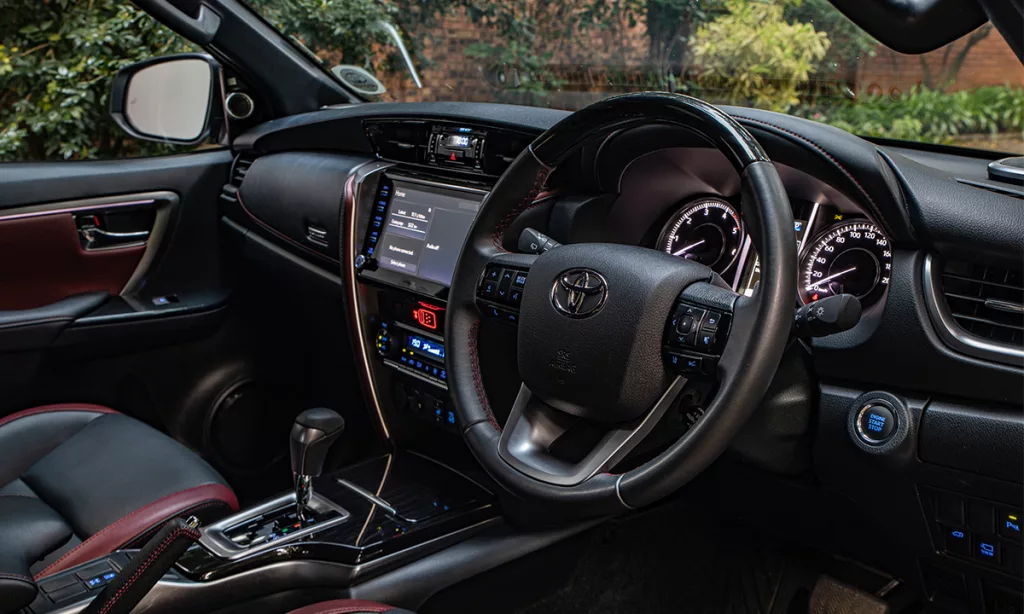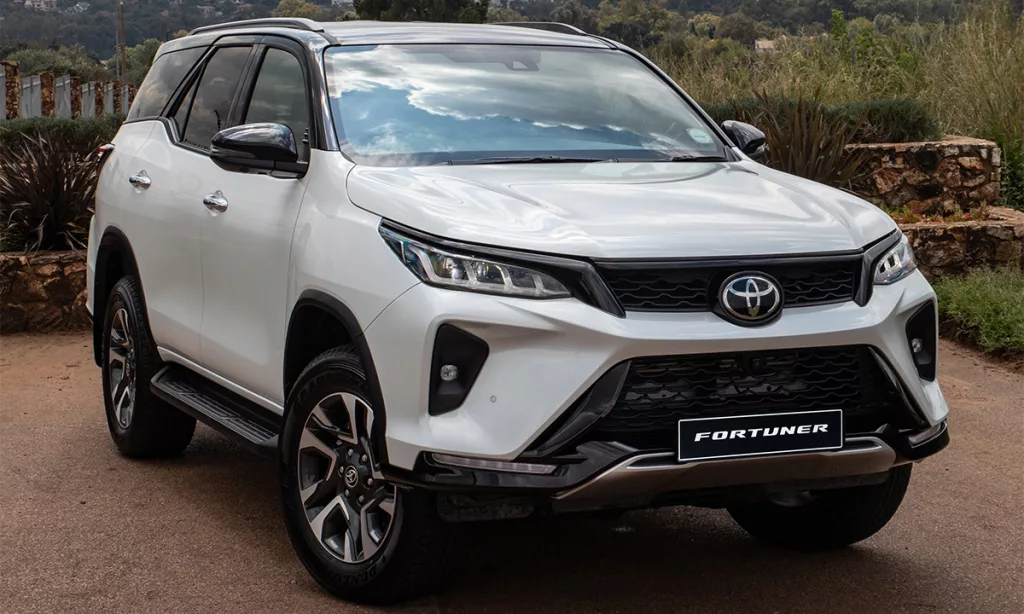Behind the wheel of the Toyota Fortuner 2.8 GD-6 4×4 VX
With one in four SUVs being sold being a Fortuner, it’s a numbers game for Toyota – even without a V6 model. Can the second-gen’s second facelift keep it at the top of the tree? Braam Peens attended the national launch in the Cape to find out.

Since launching in 2006, the Toyota Fortuner has become a household name – and more. A staple of the South African suburban upper-middle-class existence, it’s become every bit the metropolitan must-have much as the latest iPhone or Eskom-busting battery backup.
A number of successive facelifts extended the Fortuner’s tenure until an all-new second-generation model followed in 2016; which itself earned a noteworthy upgrade in 2020 when the flagship 2.8-litre GD-6 engine was boosted by a welcome 20kW/50N.m. In reaching another milestone in its 10-year life cycle, in 2023 the Fortuner has been treated to another – albeit minor – reimagining.

Pricing starts at R635 500 for the entry-level 2.4 GD-6 RB manual (the sole three-pedal derivative on offer), extending to R915 400 for the top-spec 2.8 GD-6 4×4 VX. For an additional R10 200, all 2.8-litre examples can be ordered with a bi-tone pearl white/gloss black roof combination. While the seven-strong line-up is untouched in arrangement or mechanical acumen, all variants are equipped with redesigned 18-inch alloy wheels and quad vertically-slitted LED headlamps. The indicator strip now operates dynamically in 2.8-litre models.
The more compact headlamps are instrumental in the proportioning of the primary and secondary grilles, of which the former has halved in size to the benefit of a larger bottom section that is rounded off by a silver-hued skid plate. The inclusion of resculpted front and rear bumpers provide for a more angular overall appearance to further distance it from its sometimes blobby predecessors; the latter further enhanced by blacked-out treatment of the naming strip that runs atop the number plate.
The interior of 2.4-litre derivatives goes untouched, though the black leather seats in 2.8-litre models are henceforth complemented by maroon inserts. In the latter, a pair of USB-C ports also negates the need for rear passengers to have to haul along their own power banks.

If the first-gen Fortuner suffered from tooth spine-shuddering ability, the power of evolution has seen to it that successive iterations of the Fortuner (and the Hilux it is based on) have multiplied their ability to ferry their occupants in near-car-like comfort. That tradition lives on in the newcomer.
Less palatable is the continued installation of the Fortuner’s space-gobbling pair of jump seats – removable by spanner and a salvo of some sailor slang – said by Toyota to not be adaptable to conventional mounting methods (à la Land Cruiser Prado) owing to the body-on-frame configuration. Perhaps the option should be considered for customers to have the third row deleted at factory level.
Another newly discovered niggle is the tendency for the climate control to automatically revert to recirculating air every time the engine is switched on. Not that any of this has stopped the Fortuner from steamrolling to 40% market share in the SUV segment; averaging an excess of 800 units finding new homes each month. Incidentally, as sanctified the Fortuner’s 4×4 badge may appear to soccer moms and shopping mall pavement-hoppers, according to Toyota’s research, only 59% of customers deem its off-roading ability a critical purchasing criterium.
That said, looking at its nearest rival in the Ford Everest, what the Fortuner (and Hilux) lacks is a halo V6 model. The Toyota’s 150kW GD-6 has over time proven capable and durable, but in the same way that braaiing, biltong, brandy and cola are inseparable bedfellows; from acoustics to alacrity to soul-nourishing satisfaction – so should tackling the trek with a bent sextuplet of cylinders underfoot. Six simply trumps four every time. By some form of response, a 165kW/550N.m GR-S is said by Toyota to be under investigation; while hybridised propulsion for the Fortuner is confirmed to make an appearance in the future.

Regardless of below-inflation salary increases, ever-increasing fuel prices and cost-of-living shocks, Fortuner acolytes have kept the faith with staggering commitment throughout. Add to that belief-beggaring residual value and it’s simply a product that can do no wrong.
Amid the picket fences and manicured lawns, indeed there is no higher power that keeps the Kumars, the Kumalos and the Krugers from feverishly competing with each other – let alone the Joneses. If you haven’t joined yet – welcome to the cult.
Toyota Fortuner 2.8 GD-6 4×4 VX fast facts:
- Price: R915 400
- Engine: Front-mounted, turbodiesel, 2 755cc, inline-four
- Transmission: Six-speed automatic
- Power: 150kW @ 3 000r/min
- Torque: 500N.m @ 1 600r/min
- Driven wheels: All
- 0-100 km/h: 11.31 sec
- Top speed: 180km/h
- Fuel consumption: 9.5L/100km (combined)
- CO2 emissions: 209g/km
- Rivals: Ford Everest, Mitsubishi Pajero Sport and Isuzu MU-X
Read the original story on CAR Magazine.

